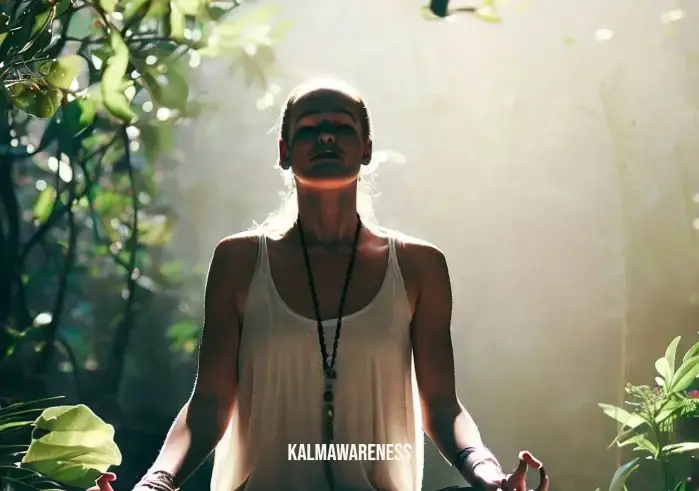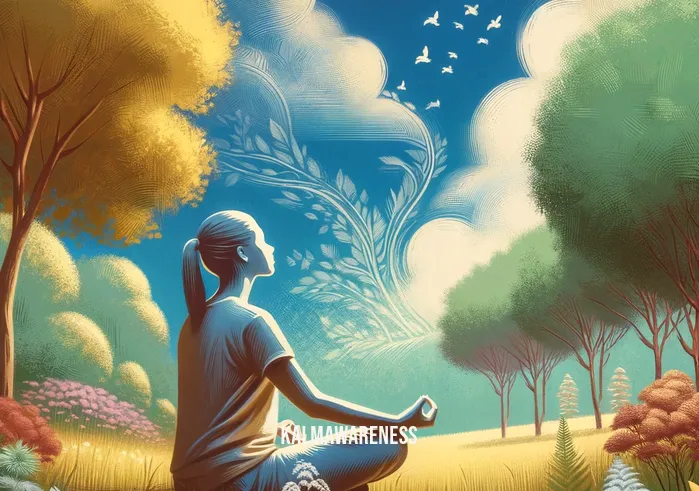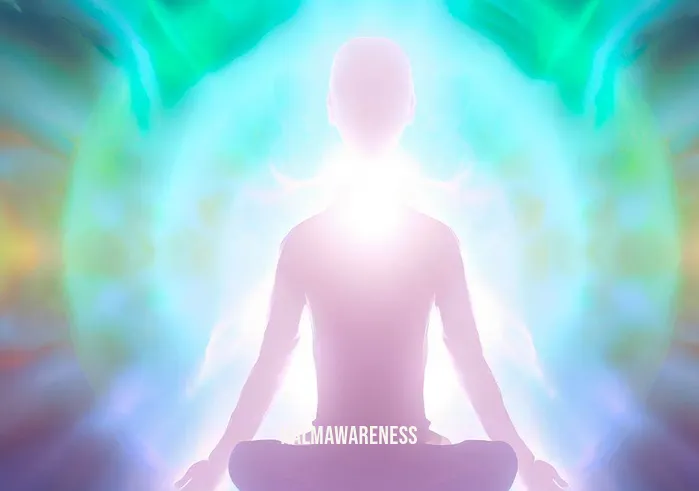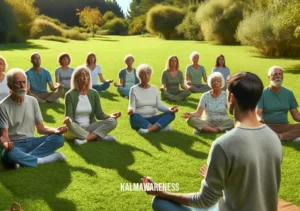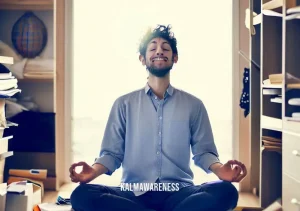Real Eyes Meditation: A Pathway to Profound Mindfulness and Awareness
Imagine you could uncover a deeper understanding of yourself and the world around you, through the act of simply opening your eyes. The power of real eyes meditation lays precisely in this intriguing concept. It is a mindfulness practice that encourages you to shift your perception and see the world in a whole new light, leveraging your senses, especially the sense of sight.
Understanding Real Eyes Meditation
In essence, real eyes meditation encourages participants to meditate with their eyes open. It involves a purposeful focus on the reality that is directly observed through your eyes. While traditional meditation often involves closing your eyes to shut out external distractions, this technique invites you to fully embrace the world around you, to see it more clearly, and to engage with it more authentically.
This form of meditation draws inspiration from practices like the EMDR meditation and its spiral technique. These methodologies employ eye movements to stimulate the brain’s processing capabilities, helping you uncover and address deep-rooted thoughts and emotions. By fully engaging with the present moment through our visual perception, we can start truly seeing the whole picture, discarding false narratives in relationships, and challenging our conditioned judgments.
“The real voyage of discovery consists not in seeking new landscapes, but in having new eyes.” – Marcel Proust
The Importance of Awareness in Real Eyes Meditation
Real eyes meditation takes you on a journey of becoming aware through the senses, with a special emphasis on vision. It encourages you to perceive reality unfiltered by judgments or conditioned thought patterns. Each moment becomes a profound experience of pure observation, making you question: “Am I awake right now?”
This heightened state of awareness helps you to develop a keen perception of the world, akin to the judgement of the wise. By experiencing reality through a more mindful and less judgmental lens, you might find yourself rejecting the negative narrative meaning that often colors our understanding of ourselves and others.
Exploring Perception and Self-Reflection
Interestingly, the real eyes meditation technique is closely tied to the act of self-reflection. Much like looking in a mirror, it allows you to observe your thoughts and feelings without judgment, prompting inquiries like “How others see me?” and “What do you see when you look in the mirror?“. This metaphor of a man looking in the mirror represents the individual’s journey of introspection and self-discovery.
“Real eyes realize real lies.” – Tupac Shakur
As you embark on this journey of real eyes meditation, you’ll find that the pathway to profound mindfulness and heightened awareness unfolds before you. The practice empowers you to see, feel, and trust in a deeper understanding of your reality, allowing for transformative personal growth.
We invite you to continue on to the next part of this insightful journey into real eyes meditation. There, we will explore the unique connection between meditation and the mirror reflection phenomenon, delve deeper into the role of senses in mindfulness, and explain the science-backed benefits of this practice. Get ready to further unravel the magic of real eyes meditation and understand how it could transform your perception of yourself and the world around you. Follow us into the next chapter!
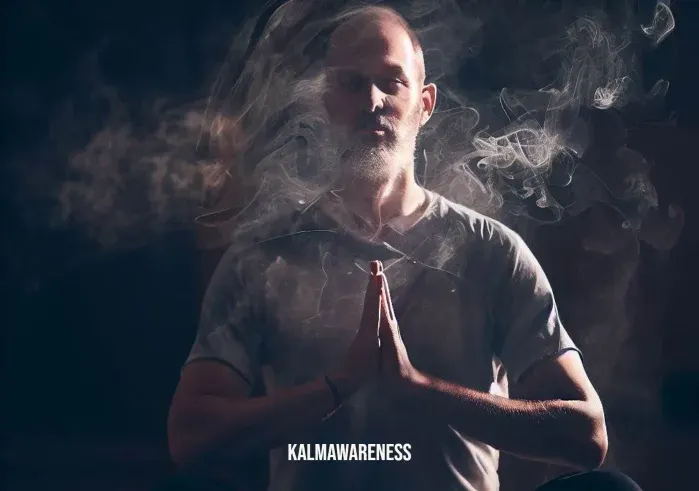
Harnessing the Power of Real Eyes Meditation: A Deep Dive into Perception and Self-Reflection
As we continue our exploration into real eyes meditation, it becomes evident that this practice not only helps to cultivate mindfulness but also provides a platform for introspection and a better understanding of our own self-perception.
The Role of Mirrors in Real Eyes Meditation
The concept of mirrors holds a significant place in the journey of real eyes meditation. Mirrors have long been associated with self-reflection, self-awareness, and perception. When you look in the mirror, what do you see?. Do you see an accurate representation of yourself, or is it a reflection shaped by self-perception and societal expectations?
Herein lies the fascinating aspect of real eyes meditation. Much like the act of observing a man looking in the mirror, real eyes meditation allows you to watch your thoughts and feelings as if they were a reflection in a mirror. This practice can have profound implications on your perception of self, and consequently, your relationship with the world around you.
The Mirror Phenomenon: Fact and Fiction
Real eyes meditation’s mirror analogy helps us understand the power of perception in our daily lives. Let’s explore a few commonly asked questions related to mirrors and reflections:
- Why can mirrors face each other?: When two mirrors face each other, they create an infinite reflection loop due to the law of reflection, symbolizing the infinite possibilities of perception in real eyes meditation.
- How can mirrors be real?: Mirrors, like our perception, are merely representations of reality. They can distort, magnify, or shrink images depending on their shape and quality, just as our perceptions can distort our understanding of ourselves and the world.
- What does a person see in front of a mirror?: We usually see a reflection of ourselves, but real eyes meditation invites you to see beyond the physical reflection, to perceive the unseen – your thoughts, emotions, and the essence of who you truly are.
- How does a person’s mirror reflection differ from their actual self?: The reflection we see in the mirror is the reverse of what others see. Similarly, our self-perception might differ from how others perceive us, underlining the need for open-mindedness and understanding in our interactions.
The Role of Senses in Real Eyes Meditation
Real eyes meditation asks us to engage all of our senses in our pursuit of mindfulness and awareness. It’s not just about what we see; it’s about the complete experience of being present and aware.
By consciously directing our attention to our senses, we can cultivate a sense of presence and mindfulness. The act of becoming aware through the senses is key in real eyes meditation. It invites us to embrace every moment, engaging with our surroundings in a deep and meaningful way. It challenges us to question our preconceived notions and biases, enabling us to perceive reality in its purest form.
| Sense | How to Engage it in Real Eyes Meditation |
|---|---|
| Sight | Focus on the objects, colors, and movement around you. |
| Hearing | Tune into the soundscape surrounding you – the hum of the air conditioner, the chirping of the birds. |
| Touch | Feel the texture of your clothes, the weight of your body on the chair. |
| Taste | Be mindful while eating. Notice the texture, taste, and aroma of your food. |
| Smell | Pay attention to the smells around you, both pleasant and unpleasant. |
In the next part of our article, we will delve deeper into the transformative effects of real eyes meditation, particularly focusing on how it influences our perception of pain and our thought processes. We will also touch upon how this practice can help rewrite false narratives in relationships. Embark on this journey of discovery with us in the next chapter.
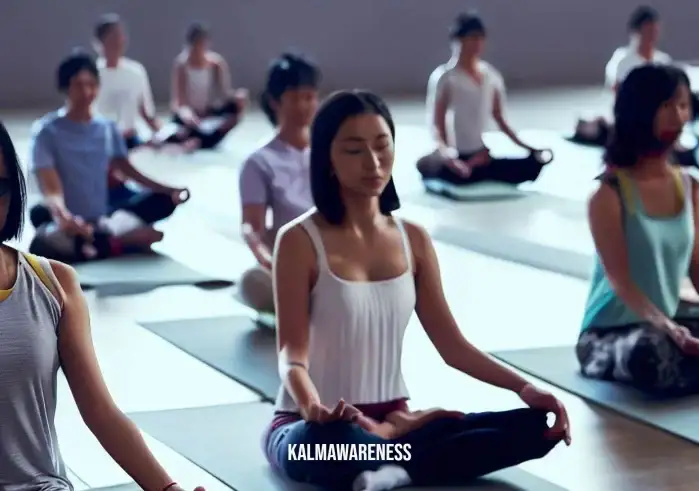
Transformative Effects of Real Eyes Meditation: A Gateway to Perception and Self-Growth
Our journey into the realm of real eyes meditation unfolds further as we delve into its transformative effects. This powerful practice is not just about observing the self but also transforming our perceptions and experiences. As we move forward, we’ll look at how real eyes meditation influences our perception of pain, impacts our thought processes, and helps rewrite false narratives in relationships.
Perception of Pain and Real Eyes Meditation
As we deepen our understanding of real eyes meditation, a crucial point to consider is its role in perceiving and managing pain. Pain, physical or emotional, is an integral part of the human experience. However, our perception of it varies greatly. An experiment comparing the perception of experienced pain reveals that our response to pain can be conditioned and influenced by various factors, including our mental state and mindfulness.
Mindfulness cultivated through real eyes meditation can help us manage pain better. It invites us to observe our pain without judgment or resistance, which is often the cause of suffering. As Thich Nhat Hanh, a renowned mindfulness advocate, once said, “The secret of Buddhism is to remove all ideas, all concepts, in order for the truth to have a chance to penetrate, to reveal itself.” In the context of pain, removing the concept of pain as a negative experience allows the reality of the sensation to reveal itself, often reducing its intensity.
Thoughts and Real Eyes Meditation
The influence of real eyes meditation extends to our thought processes. This practice invites us to realize a crucial truth: “my thoughts are not your thoughts“. It underlines that our perception of the world is unique and shaped by our individual experiences, beliefs, and biases.
As we engage in real eyes meditation, we learn to observe our thoughts without getting entangled in them. We begin to see them for what they are – transient and ever-changing. John Welwood, a renowned psychologist and author, once noted, “Our bodies know they belong, It’s our minds that make our lives so homeless.” Real eyes meditation helps our minds to ‘belong’, to settle in the present moment, and to see reality beyond our thought-created narratives.
Real Eyes Meditation and Relationships
At the core of real eyes meditation lies the understanding of our self-perception and how it affects our interaction with others. Often, in our relationships, we get entangled in false narratives. We interpret others’ actions based on our perceptions and past experiences, creating narratives that may not reflect the reality.
Real eyes meditation offers a pathway to rewrite these false narratives by cultivating mindfulness and non-judgmental awareness. It enables us to see the whole picture, beyond our biases and assumptions. The result? Improved understanding, compassion, and harmonious relationships.
Continue to the next part of the article as we venture into the practical application of real eyes meditation. We’ll explore unique techniques like EMDR meditation, the spiral technique, and the role of the ‘third eye’ in this practice. Join us in the next chapter as we learn how to harness the power of real eyes meditation in our everyday lives.
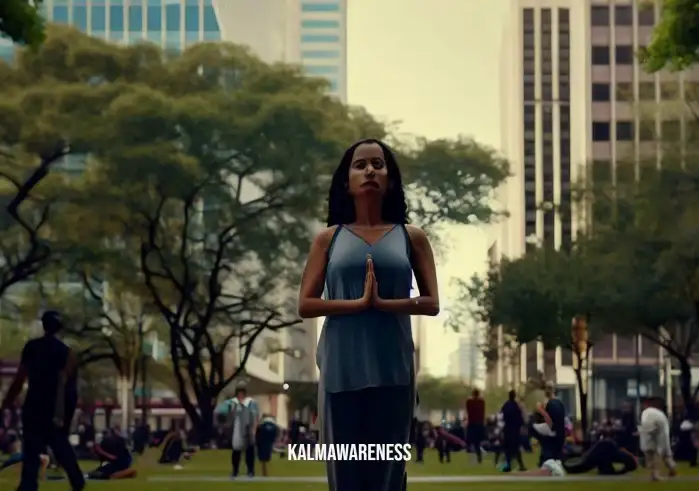
Techniques and Tools: Deepening Your Practice of Real Eyes Meditation
As we progress on our journey of understanding real eyes meditation, it is essential to equip ourselves with the right tools and techniques. This meditation practice, deeply rooted in mindfulness and perception, is versatile and multi-faceted, incorporating a variety of methods like EMDR meditation, the spiral technique, and the opening of the ‘third eye’. Let’s delve into these techniques and how they can deepen and enrich our real eyes meditation practice.
EMDR Meditation and Real Eyes Meditation
EMDR (Eye Movement Desensitization and Reprocessing) is a therapeutic approach traditionally used for treating post-traumatic stress disorder. However, it has found application in the field of meditation, particularly in real eyes meditation. EMDR meditation combines guided mindfulness with eye movements to process and release emotional distress.
By focusing on the eyes, EMDR meditation links directly to the ‘real eyes’ concept. The eyes, being the windows to our souls, enable us to perceive reality. Through EMDR meditation, we can become more present and aware of our internal and external environments. In the words of Eckhart Tolle, “The primary cause of unhappiness is never the situation but your thoughts about it.”
The Spiral Technique in Real Eyes Meditation
Another essential method in real eyes meditation is the spiral technique. The spiral technique involves moving your eyes in a spiral pattern while maintaining a state of mindfulness. This movement can help in grounding, centering, and creating a better connection with our deeper self.
The spiral represents life’s journey and the cycles of nature, making it a powerful symbol for this type of meditation. As the eyes trace the spiral’s path, the mind can further delve into the act of perception, illuminating the nuances of our experiences and reality. This quote from the Dalai Lama resonates with this concept: “Remember that sometimes not getting what you want is a wonderful stroke of luck.”
Opening the Third Eye in Real Eyes Meditation
Real eyes meditation also explores the concept of the ‘third eye’. This is often referred to as the ‘inner eye’ or the ‘mind’s eye’, providing insight beyond ordinary sight. Activating the third eye through meditation can lead to enhanced intuition, perception, and self-awareness. Third eye meditation practices often involve focusing your attention on the area between your eyebrows, visualizing a light or color, and breathing deeply.
In our journey towards perception and mindfulness, awakening the third eye can lead to profound realizations about our lives and the universe. It’s like opening a new window to perceive reality. As Rumi once said, “The universe is not outside of you. Look inside yourself; everything that you want, you already are.”
Continue to the next part of our article to delve deeper into the symbology of mirrors in real eyes meditation, and how the reflections we see can influence our perceptions and understanding of ourselves. You’ll also learn about how your breathing can affect your meditation practice and the role of the body in our journey towards mindfulness and perception. Join us in the next chapter for these insightful explorations.
| Technique/Tool | Description | Link |
|---|---|---|
| EMDR Meditation | A form of therapy that combines guided mindfulness with eye movements to process and release emotional distress. | EMDR meditation |
| Spiral Technique | A method in meditation involving moving your eyes in a spiral pattern while maintaining mindfulness. | The spiral technique |
| Third Eye Activation | A meditative practice that focuses on enhancing intuition, perception, and self-awareness by focusing on the third eye. | Third eye meditation
|
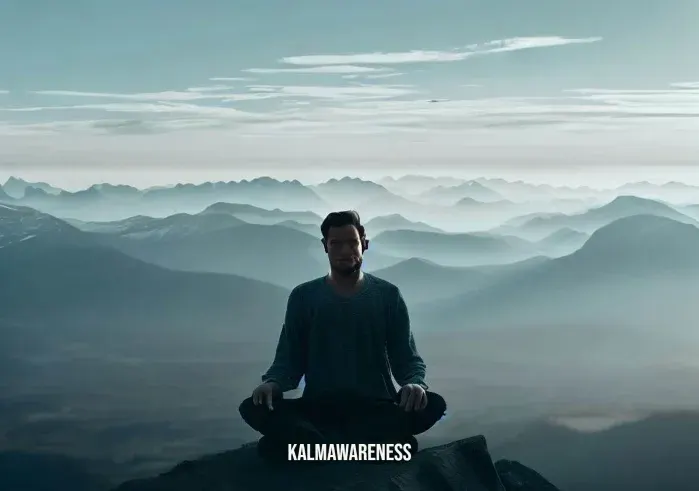
Mirrors and Reflections: The Power of Self-Perception in Real Eyes Meditation
The eyes are powerful tools for perception. As we delve deeper into real eyes meditation, another fascinating aspect to explore is the role of mirrors in this practice. Mirrors, through the reflections they provide, can reveal profound truths about ourselves and our reality. This chapter will focus on the role of mirrors in meditation and how the reflections we see can influence our perceptions.
Mirrors: A Reflection of Ourselves
When you look in the mirror, what do you see? Do you simply see your physical self, or can you look beyond that? The use of mirrors in real eyes meditation can aid in self-reflection and introspection, offering a deeper look into our identity and self-perception.
Each time we stand in front of a mirror, we are given an opportunity to see ourselves as we are – raw, real, and authentic. This moment of truth, when we face ourselves directly, can be quite enlightening, revealing our strengths, vulnerabilities, and potentials.
Reflecting on the famous words of Walt Whitman, “Do I contradict myself? Very well, then I contradict myself, I am large, I contain multitudes.”
Mirrors and Reality
Mirrors can also provide intriguing insights into the concept of reality. They can make us question what is real and what isn’t, urging us to discern the difference between truth and false narratives. What you perceive in the mirror may differ from how others see you, leading to the understanding that perception is subjective and reality can be multifaceted.
Mirrors in Meditation
Incorporating mirrors into your meditation practice can prove to be transformative. Mirrors can serve as tools for self-inquiry, helping us to connect more deeply with our thoughts and emotions. Practicing mirror meditation can assist us in confronting and acknowledging our fears and insecurities, and in turn, can help us nurture self-compassion and self-love.
In the words of Carl Jung, “Your visions will become clear only when you can look into your own heart. Who looks outside, dreams; who looks inside, awakes.”
In the final chapter of our exploration into real eyes meditation, we will be investigating the link between the breath and our meditation practice. You’ll discover the power of mindful breathing, its influence on our perception, and how it anchors us in the present moment. Additionally, we’ll delve into the importance of physical posture during meditation and how it impacts our mindfulness practice.
Looking forward to seeing you in the next chapter for these invigorating insights.
Summary of this Chapter:
- Mirrors as Reflective Tools: Mirrors in real eyes meditation can serve as tools for introspection, offering insights into our identities and perceptions.
- Mirrors and Reality: Mirrors can urge us to discern between truth and false narratives, enhancing our understanding that perception is subjective and reality is multifaceted.
- Mirrors in Meditation: Incorporating mirrors into meditation practice can assist in confronting fears and insecurities, fostering self-compassion and self-love.

Breathing and Posture: The Foundations of Real Eyes Meditation
In our exploration of real eyes meditation, we’ve delved into the role of sight, mirrors, and self-perception. Now, let’s shift our focus to the fundamentals of this meditative practice: breath and posture. Understanding these two critical aspects can truly elevate your meditative experience, making it richer, deeper, and more transformative.
Mindful Breathing: The Anchor of Awareness
The breath serves as the keystone of any meditation practice. It is the constant, the anchor, that keeps us grounded in the present moment. Mindful breathing encourages us to be fully present, enhancing our ability to connect with ourselves and our surroundings.
In real eyes meditation, breathwork goes hand in hand with sight. As we open our eyes to perceive the world around us, we simultaneously use our breath to ground ourselves in the here and now. This intertwining of senses makes our meditation practice more immersive and profound.
Remember the words of Thich Nhat Hanh, “Breath is the bridge which connects life to consciousness, which unites your body to your thoughts.”
The Role of Posture in Meditation
Posture plays a significant role in meditation, including real eyes meditation. The physical posture we adopt during our practice can significantly influence our mental and emotional states. Maintaining a straight spine during meditation is critical. This posture not only promotes proper breathing but also symbolizes alertness, dignity, and inner strength.
Whether we’re sitting, standing, or lying down during our practice, maintaining a comfortable and aligned posture can make a significant difference. It helps us stay balanced, centered, and focused, further enriching our meditation journey.
In Conclusion: The Real Eyes Meditation Journey
The journey of real eyes meditation is a fascinating one, filled with profound insights and transformative experiences. This practice beautifully intertwines various aspects of our being – sight, self-perception, breath, and posture, to provide a holistic meditation experience.
This journey doesn’t end here. As we continue to explore and dive deeper, there’s always more to discover, more to learn. Keep exploring the collections and blogs on our site for more insights into real eyes meditation and mindfulness practices.
In the words of Rumi, “The wound is the place where the Light enters you.” So, keep seeking, keep questioning, keep meditating.
Key Takeaways of this Chapter
- Mindful Breathing: The breath serves as an anchor that keeps us grounded in the present moment. It plays a critical role in enhancing our meditation experience.
- The Role of Posture: The physical posture we adopt during our meditation practice can significantly influence our mental and emotional states. Maintaining a comfortable and aligned posture helps in staying balanced, centered, and focused.
As we conclude our exploration of real eyes meditation, we invite you to continue your journey with us. Keep learning, keep growing, and keep evolving. Remember, the journey of self-discovery is ongoing and ever-evolving, just like you.
If you found this exploration insightful, we encourage you to explore our other resources on mindfulness, meditation, and well-being. Thank you for embarking on this journey with us, and we look forward to sharing more enlightening experiences with you.
